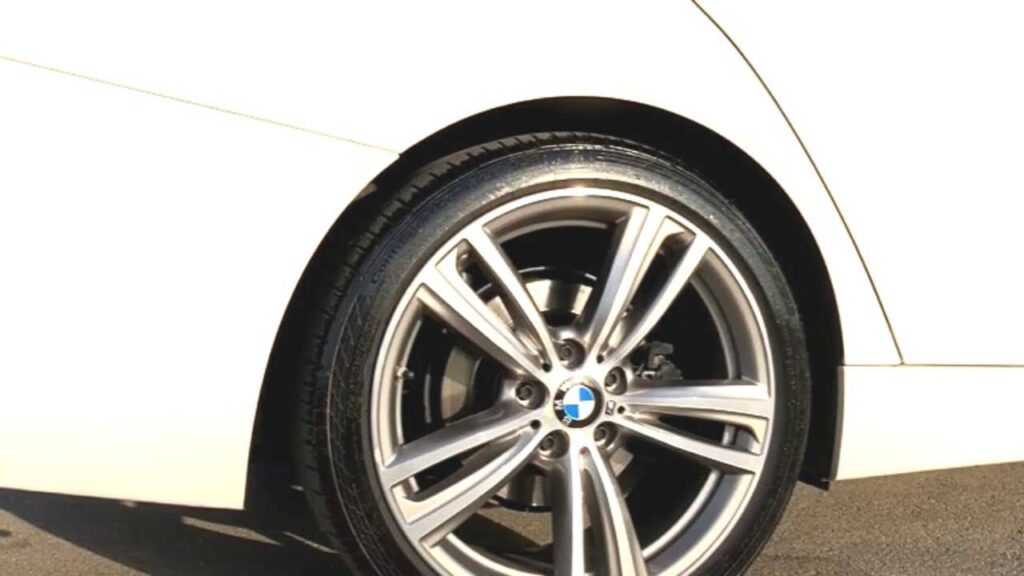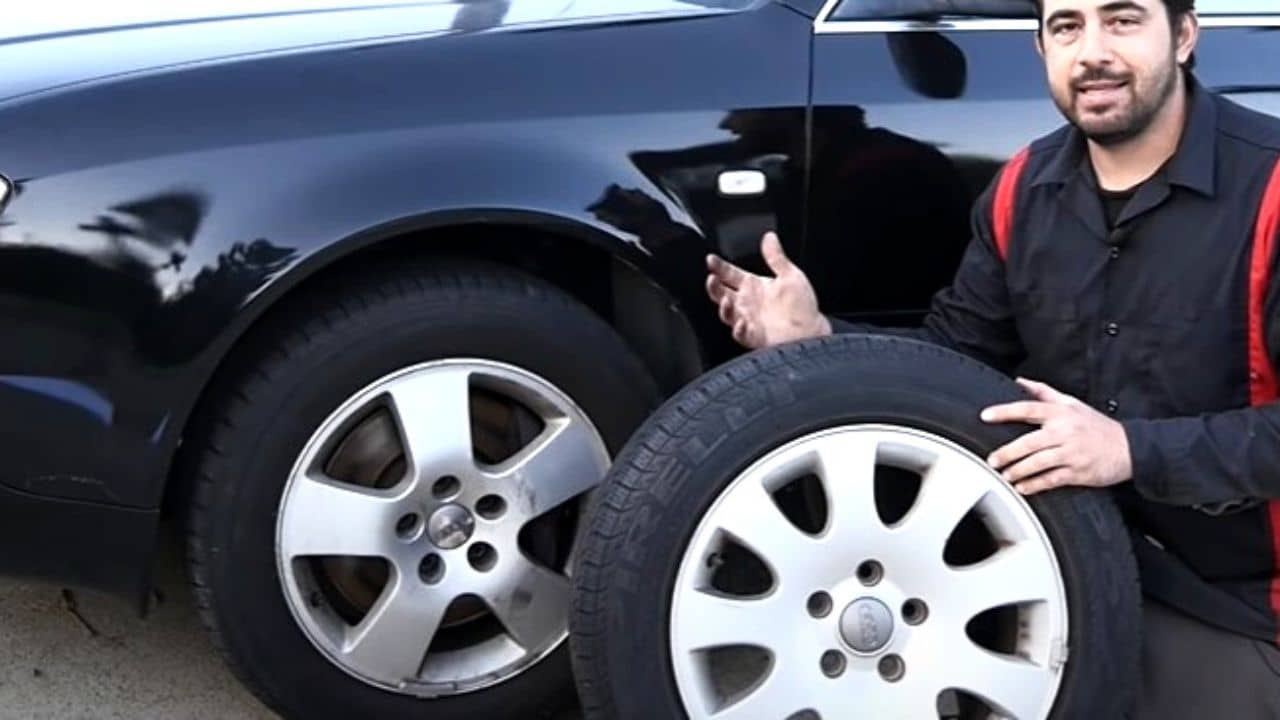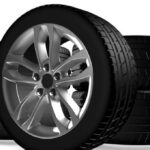Can You Replace 17 Inch Rims With 20 Inch? The answer to this question is a resounding yes! You can replace 17 inch rims with 20 inch rims without any problems. In fact, many people do this upgrade to make their car look more stylish and modern.
The only thing you need to be aware of is the difference in tire size. 20 inch tires are slightly wider than 17 inch tires, so you may need to buy new tires or have your old ones stretched to fit on your new rims. But other than that, the process is simple and straightforward.
If you have a car that takes 17 inch rims and you’re looking to upgrade to 20 inch rims, there are a few things you need to consider. First, 20 inch rims will be wider and heavier than 17 inch rims, so your car’s suspension will need to be able to handle the extra weight.
You May Like
You’ll also need to make sure the new rims will fit inside your car’s wheel well – if they’re too big, they could rub against the body of your car when you turn or hit a bump in the road.
Finally, you’ll need to decide if you want to keep your current tires or buy new ones that are compatible with the larger rims. If you do decide to switch out your 17 inch rims for 20 inch rims, just make sure you do your research first and know what all is involved!
How to change it: Simple process, Just do it!
- Park the vehicle on a level surface and set the emergency brake
- Loosen the lug nuts on the 17-inch rims with a lug wrench
- Raise the vehicle off the ground with a jack and support it with jack stands placed under the frame rails
- Remove the 17-inch rims from the vehicle and set them aside
- Place 20-inch rims on the vehicle in their place, being careful to not cross thread them onto the studs
- 6 Hand tighten each lug nut until they are snug against the rim, then lower the vehicle to the ground and finish tightening them with a lug wrench in a star pattern until they are all tight
What are the Benefits of Replacing 17 Inch Rims With 20 Inch
20 inch rims are becoming increasingly popular, especially on luxury vehicles. Many people believe that 20 inch rims improve the look of a car and make it appear more expensive. But what are the benefits of replacing 17 inch rims with 20 inch?
One benefit of having 20 inch rims is that they fill up the wheel well more, making the car look more aggressive. Another advantage is that they provide better handling due to the increased contact patch with the ground. Additionally, they can give your car a more luxurious appearance.
You May Also Like
If you’re considering replacing your 17 inch rims with 20 inch, weigh the pros and cons carefully. Make sure to take into account the cost, as 20 inch rims can be quite expensive. But if you’re looking for improved performance and aesthetics, 20 inch rims may be worth the investment.
Moreover, when it comes to upgrading the wheels on your car, going from 17 inch rims to 20 inch rims can offer a number of benefits. Here are just a few reasons why you might want to consider making this upgrade:
1. Improved Appearance: One of the most obvious benefits of switching to larger rims is that it can significantly improve the appearance of your vehicle. If you’re looking for a way to make your car stand out from the crowd, bigger wheels are definitely one way to do it.
2. Enhanced Performance: In addition to looking better, 20 inch rims can also help improve your car’s performance. Larger wheels provide better contact with the road surface, which can lead to improved traction and handling. And if you choose lighter weight wheels, you may also see a slight boost in acceleration and fuel economy.
Read Also: Can You Put R16 Tires on R17 Rims?What is the Advantage to Having 20 Inch Wheels?
There are several advantages to having 20-inch wheels. They provide a smoother ride, better handling and braking, and a more comfortable driving experience. The larger wheels also offer a wider range of motion, making them ideal for off-road driving and exploration.
For many people, the biggest advantage of 20-inch wheels is the improved performance they offer. With larger wheels, the car has more contact with the ground, providing better traction and stability. This can be particularly beneficial in inclement weather or on rough terrain. Additionally, the increased size of the wheels means that there is less likelihood of flats or other tire problems.
Moreover, the main advantage to having 20 inch wheels is that they can provide a smoother ride. The larger the wheel, the less bumps and vibrations will be felt by the rider. Additionally, 20 inch wheels can help to improve handling and performance, as they offer more contact with the ground.
This improved contact can help to increase traction, making it easier to corner and brake.
Are There Any Disadvantages to Replacing 17 Inch Rims With 20 Inch?
No, there are no disadvantages to replacing 17 inch rims with 20 inch. In fact, many people believe that upgrading to larger rims can actually improve your vehicle’s performance.
Some of the benefits of switching to larger rims include improved handling and braking, as well as a more comfortable ride. Additionally, larger rims can also make your car look more stylish and luxurious.

How Much Would It Cost to Replace 17 Inch Rims With 20 Inch
The cost of replacing 17 inch rims with 20 inch rims can vary depending on a few factors.
The first factor is the type of car you have. Some cars are made to accept larger rims without any modification, while others may need fenders rolled or other adjustments to accommodate the new size.
The second factor is the style of rim you choose. Some 20 inch rims can be very expensive, while others are more reasonably priced.
The third factor is whether or not you need tires to go along with the new rims. If so, the type of tire you choose can also affect the price.
Moreover, 17 inch rims are typically less expensive than 20 inch rims. The average cost to replace 17 inch rims with 20 inch rims is between $400 and $700. This price range does not include the cost of tires or other wheel accessories.
Read Also: What Size Tires Go on 19 Inch Rims?Can I Put 20 Rims on My Car?
You can technically put 20 rims on your car, but we wouldn’t recommend it. Here’s why: For starters, 20 rims would add a lot of weight to your car.
This extra weight would make it harder for your car to accelerate and brake, and could potentially cause damage to the suspension. Additionally, 20 rims would make your car wider and taller. This could make it more difficult to maneuver, and increase the risk of tipping over in a sharp turn.
Finally, 20 rims would likely void your warranty. Most manufacturers only cover vehicles with factory-installed parts, so adding aftermarket components like 20 rims could jeopardize your coverage. If you’re looking to make a style statement with your car, there are other ways to do it without compromising safety or voiding your warranty.
Consider adding a unique paint job or decal instead – or better yet, stick with the tried-and-true method of simply washing and waxing your ride regularly to keep it looking its best.
What Happens If I Change My Rim Size?
If you change your rim size, it can affect the way your car handles. It can also cause problems with your tires. If you have a smaller rim, it may not be able to support the weight of your car.
This could lead to a blowout. A larger rim could cause your tire to rub against the fender or body of your car. This could create a flat spot on your tire and cause a vibration when you drive.
Can I Replace 18 Inch Wheels With 20 Inch?
It is possible to replace 18 inch wheels with 20 inch wheels, but there are a few things to keep in mind.
Step-1: The 20 inch wheels will be wider and may not fit in the wheel well without modifications.
Step-2: The larger wheels will affect the speedometer and odometer readings, so you’ll need to recalibrate them.
Step-3: The increased width can cause clearance issues when turning or going over bumps.t
Step-4: The larger wheels will add weight to the car which may impact performance.
So while it is doable to replace 18 inch wheels with 20 inch ones, it’s important to weigh all of these factors before making a decision.
Can I Put 20 Inch Rims on My Ram 1500
If you’re looking to upgrade the wheels on your Ram 1500, you may be wondering if you can go up to 20 inch rims. The good news is that you can indeed put 20 inch rims on a Ram 1500, and they will fit just fine. There are a few things to keep in mind, however.
- When you upgrade to larger rims, you also need to upgrade your tires. This is because the larger rims will make your existing tires look undersized and can cause problems with traction and handling. So, make sure to get new tires that are appropriate for the 20 inch rims.
- You’ll need to check your suspension to see if it can handle the larger rims and tires. If not, you may need to do some upgrades there as well. But in most cases, the suspension on a Ram 1500 should be able to handle 20 inch rims without any issues.
- Don’t forget about aesthetics! Make sure that the 20 inch rims you choose complement the overall look of your truck. With so many options out there, it shouldn’t be too difficult to find something that looks great and fits right in with the rest of your ride.
How to Calculate Odometer With Bigger Tires
Do you have a car with bigger tires? If so, then you may be wondering how to calculate your new odometer reading. Here’s a quick guide on how to do just that!
To calculate your new odometer reading with bigger tires, you’ll need to know the circumference of your new tires. You can usually find this information on the side of the tire. Once you have that number, simply multiply it by the number of rotations your tires make in one mile.
For example, let’s say your new tires have a circumference of 80 inches. And let’s say each tire makes 500 rotations in one mile. To calculate your new odometer reading, you would multiply 80 by 500, which equals 40,000.
This means that for every mile driven, your odometer will read 40,000 miles higher than it did before (assuming no other changes were made). Of course, this is just a rough estimate – your actual mileage may vary depending on factors like air pressure and road conditions. But it’s a good starting point if you’re trying to figure out how much further you can travel with bigger tires!
17 Vs 20 Inch Wheels
17 inch wheels are the standard size for many vehicles. They provide a good balance between grip and comfort while still being able to rotate quickly. Many people choose this size because it offers a smooth ride and good handling.
However, there are some disadvantages to having smaller wheels. They can be more difficult to control on slippery surfaces and in tight turns. Additionally, they may not be able to clear obstacles as easily as larger wheels.
20 inch wheels are becoming increasingly popular in the automotive world. They offer improved performance over smaller wheels due to their increased contact patch with the ground. This results in better traction and grip, which is especially beneficial when driving on low-traction surfaces like snow or ice.
Additionally, larger wheels can clear obstacles more easily than smaller ones, making them ideal for off-road driving.
17 Vs 20 Inch Wheels Off-Road
When it comes to off-roading, there are a few factors that you need to consider when choosing the right wheel size. One of the most important factors is the width of the tire. The wider the tire, the more grip you will have on slippery or uneven surfaces.
However, wider tires can also make your vehicle harder to control on tight turns.
Another factor to consider is the diameter of the wheel. Larger wheels can help you navigate over obstacles more easily.
They also provide a smoother ride on rough terrain. However, larger wheels can also make your vehicle less stable and more difficult to control at high speeds.
So, which is better for off-roading: 17 inch wheels or 20 inch wheels?
There is no easy answer as it depends on your specific needs and preferences. If you want more grip and stability, then go with wider tires and smaller wheels. If you prioritize speed and agility, then choose narrower tires and larger wheels.
Ultimately, it’s up to you to decide what works best for your off-roading adventures!
17 Or 20 Inch Wheels for Towing
When shopping for a new set of wheels for your tow vehicle, you may be wondering if 17 or 20 inch wheels are the best option. Here is some information to help you make a decision.
17 inch wheels are typically the standard size for most passenger vehicles.
They provide a good balance of traction and fuel economy. However, they may not be ideal for towing heavy loads.
20 inch wheels are often used on larger vehicles, such as SUVs and trucks.
They offer better traction and can handle heavier loads without sacrificing fuel economy. However, they can be more expensive than 17 inch wheels.
17 Vs 20 Inch Wheels Jeep
When it comes to choosing the right size wheels for your Jeep, there are a few things to consider. The most important factor is the terrain you’ll be driving on. If you’re planning on doing some off-roading, then bigger is definitely better.
But if you’re mostly sticking to city streets and highways, then smaller wheels might be just fine.
Another thing to think about is tire size. A larger wheel will obviously require a taller tire, which can affect gas mileage and handling.
So if you’re looking for the best of both worlds – good off-road performance and good fuel economy – then going with a 17 or 18 inch wheel might be the way to go.
Finally, it’s worth mentioning that 20 inch wheels can be harder to find (and more expensive) than 17 or 18 inch ones. So if budget is a concern, stick with something a little more common.
Ultimately, it’s up to you what size wheels you choose for your Jeep – just make sure they fit well and won’t cause any problems down the road!
Are 20 Inch Wheels Ok for off Road
Off roading is a popular pastime for many people, but it’s important to make sure you have the right equipment. 20 inch wheels might be okay for some off roading, but they might not be suitable for all terrain. It’s important to consider the type of off roading you’ll be doing and whether 20 inch wheels are appropriate.
If you’re not sure, it’s always best to err on the side of caution and go with larger wheels.
16-Inch Wheels Vs 20 Inch Wheels
There are a few key things to consider when choosing between 16-inch wheels and 20-inch wheels for your car. First, think about the type of driving you’ll be doing. If you’re mostly driving on city streets or highways, smaller wheels may be a better choice because they provide a smoother ride.
If you’re planning to do a lot of off-roading or performance driving, however, larger wheels may give you the traction and control you need. Another factor to consider is the width of your tires. Wider tires can provide better grip and stability, but they may also make your car more difficult to handle at high speeds.
Narrower tires may not offer as much traction, but they can help improve fuel economy and make your car easier to maneuver. Finally, take into account the overall look you want for your car. Smaller wheels can give it a more sophisticated appearance, while larger ones can make it look more aggressive.
Ultimately, it’s up to you to decide which size looks best on your vehicle.
Frequently Asked Questions
Q: How do I choose the right type of rim for my car?
If you’re looking to change the rims on your car, it’s important to choose the right type to ensure they fit properly and look great. Here are a few things to keep in mind when shopping for new rims:
1. Make sure you know the size of your current rims. You’ll need this information to ensure that you purchase the correct size of replacement rims.
2. Consider the style of your car. If you have a sporty vehicle, you may want to choose rims that match its aesthetics. Conversely, if you have a more traditional car, you may want to stick with classic-looking rims.
3. Think about how much money you’re willing to spend on new rims. There are many different price points available, so it’s important to set a budget before beginning your search.
Q: What are the benefits of upgrading to a 20 inch rim?
If you’re looking for a smoother, more comfortable ride, upgrading to a 20-inch rim is a great option. With a larger diameter, the 20-inch rim provides a better surface area for your tire to grip onto, which results in less rolling resistance and improved handling.
In addition, the increased size helps to absorb bumps and vibrations from the road for a smoother ride.
If you frequently ride on rough roads or off-road trails, a 20-inch rim can also give you an advantage. The larger size helps to protect your tires from debris and rocks that can cause punctures, flats, and other damage.
Plus, with the increased surface area, you’ll enjoy better traction and braking power when you need it most.

Conclusion of Can You Replace 17 Inch Rims With 20 Inch?
If you own a car with 17 inch rims, you may be wondering if you can replace them with 20 inch rims. The answer is yes, you can replace them, but there are a few things to consider before doing so. For starters, 17 inch rims are the standard size for most cars, so switching to 20 inch rims will definitely make your car stand out from the rest.
However, keep in mind that larger rims mean that your tires will be more expensive and they will also wear out faster. Additionally, 20 inch rims may not fit all types of cars – so it’s important to do your research before making the switch. Overall, replacing your 17 inch rims with 20 inch rims is possible, but it’s important to weigh the pros and cons before making the decision.
You may also need to adjust the suspension of your car to accommodate the larger size rims.















